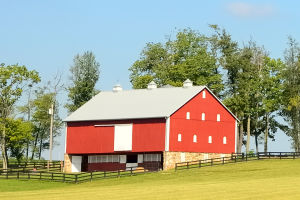The growth rings of trees are a fascinating feature that allows us to peer into the past and present of the natural world.
By examining the concentric circles that make up a tree trunk, we can gain insight into the tree's age, health, and the environmental conditions it has experienced throughout its life. In this article, we will explore the science behind tree rings and their many uses.
Firstly, what are tree rings and how do they form? The rings of a tree are made up of cambium, a layer of tissue in the stem that produces both phloem and xylem cells. Cambium is a meristem, meaning it has the ability to divide and differentiate into different types of cells.
Throughout the year, cambium cells divide at different rates depending on the season. In the spring and summer, when conditions are optimal for growth, cambium cells divide rapidly, producing large, thin-walled xylem cells with numerous vessels for water transport.
In the fall, as temperatures drop and daylight hours decrease, cambium cell division slows down, resulting in the formation of smaller, thick-walled xylem cells with fewer vessels.
These alternating patterns of growth and dormancy are reflected in the rings of a tree trunk. Each ring represents one year of growth, with the width of the ring indicating the relative speed of growth during that year.
The thickness and density of the ring also provide clues to the health of the tree. In years when the tree is stressed by drought, disease, or other factors, the rings may be narrower and less dense. Conversely, in years with favorable conditions, the rings may be wider and denser.
Tree rings are not just a curiosity for naturalists and dendrochronologists. They have practical applications in fields ranging from meteorology to geology to archaeology. By examining the width and density of tree rings, scientists can reconstruct past climates and weather patterns.
For example, a series of narrow rings in a particular region may indicate a period of drought or other environmental stress, while a series of wide rings may suggest a period of abundant rainfall and sunny weather.
By analyzing the rings of ancient trees, researchers can also gain insight into past cultural and environmental conditions. In some cases, trees have been found that are over a thousand years old, with growth rings that can be correlated with historical events and changes in human society.
The study of tree rings is also important for understanding modern climate change. By examining the rings of trees in different regions, scientists can gain a better understanding of how climate patterns are changing over time.
For example, if the rings in a particular region are consistently becoming narrower over the past several decades, it may suggest that the climate is becoming drier and less hospitable to tree growth.
This type of information can be used to inform conservation and land management decisions, as well as help us understand how human activities are impacting the natural world.
In addition to their scientific uses, tree rings can also be valuable for individual tree management.
By analyzing the rings of a tree, arborists can determine whether the tree has experienced stress or damage, and take steps to address these issues before they become more serious. This can help to prolong the life of the tree and ensure its continued health and vitality.
The study of tree rings is a fascinating and important field with many practical applications.
By examining the growth rings of trees, scientists can gain insight into past and present environmental conditions, reconstruct ancient history and understand how human activities are impacting the natural world.
At the same time, tree rings can also be a valuable tool for managing individual trees and promoting their health and longevity.


